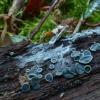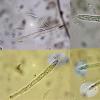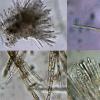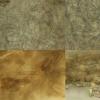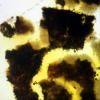
21-12-2025 09:32
Hello.A tiny ascomycete found embedded in wood in

21-12-2025 21:32
Pol DebaenstHello, Garden, Burgweg 19, Veurne, BelgiumOn 10/1

22-12-2025 23:38
Patrice TANCHAUDBonsoir, récolte sur un mur en pierre, apothéci

22-12-2025 00:47
Patrice TANCHAUDBonsoir, récolte à proximité du milieu dunaire

21-12-2025 21:40
Isabelle CharissouBonjour, j'aimerais connaitre les références de

20-12-2025 23:08
Patrice TANCHAUDBonsoir, récolte sur sol sablonneux dans l'arri�
saludos
Joseba
This is Chlorociboria, two species are rather similar.
Ellis & Ellis (1997): C. aeruginascens, spores 6-8 x 1-1,5 µm and C. aeruginosa, spores 10-14 x 1,5-2,5 µm.
Good noght.
Pol
Hi to both
I don't think this fungus is a Chlorociboria because the very refractive VBs of the paraphyses are talking us of a Mollisia species.

Hello,
very probably Mollisia olivascens (= Haglundia perelegans).
You should check the KOH reaction of the paraphyse vacuoles - it should be yellow.
best regards,
Andreas

Hi Joey,
did you see the multicellular hairs in foto 5, bottom left and right? They look like "Haglundia".
And the apothecia have a kind of "tough" appearance unlike "normal" Mollisia but as I know it form Mollisia olivascens and elegantior.
B.t.w. I had M. elegantior 7 days ago in a nature reserve on a lying rotten Fagus stem, decaying since 26 years (thrown by a storm in 1990).
best regards,
Andreas
